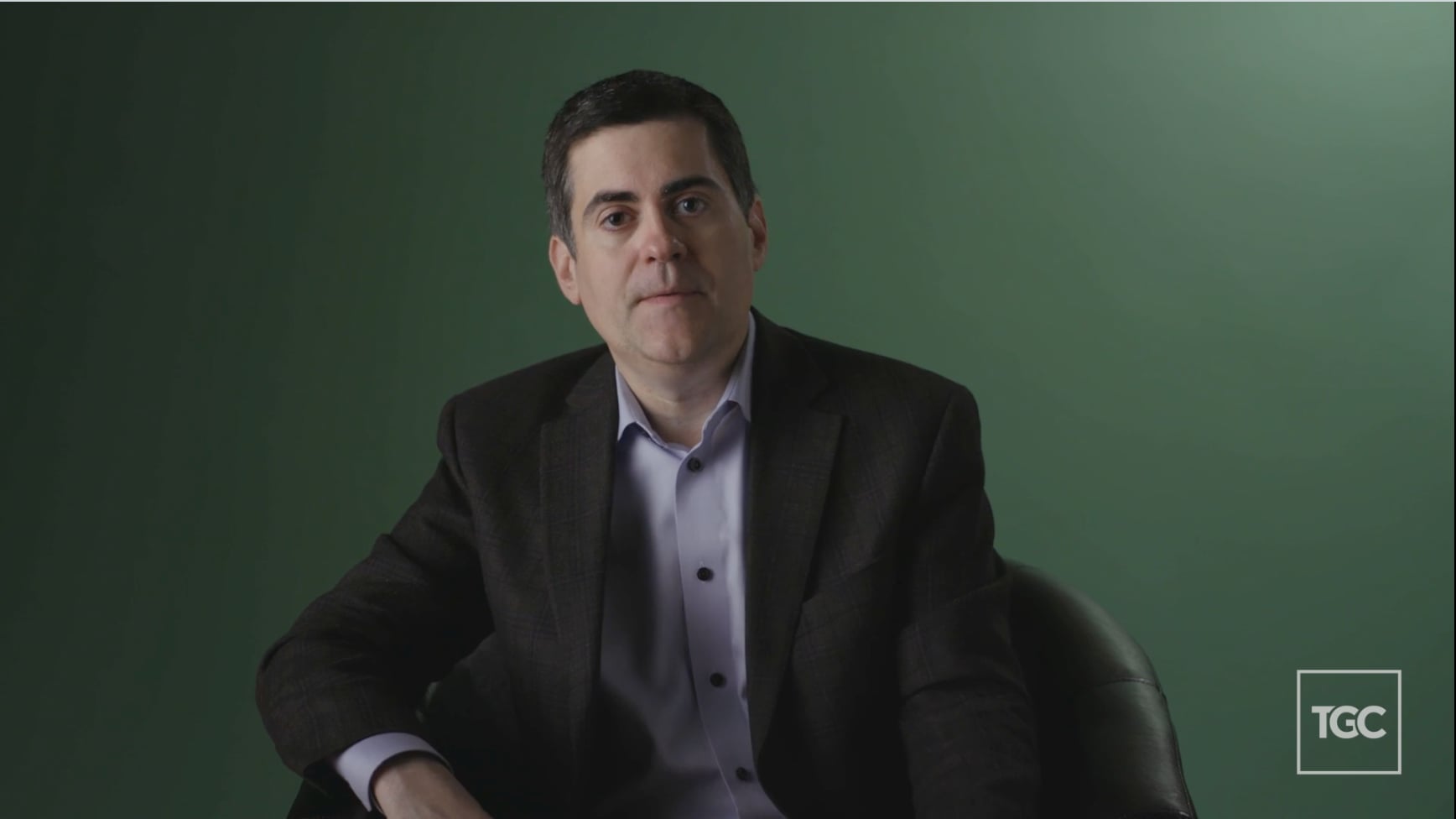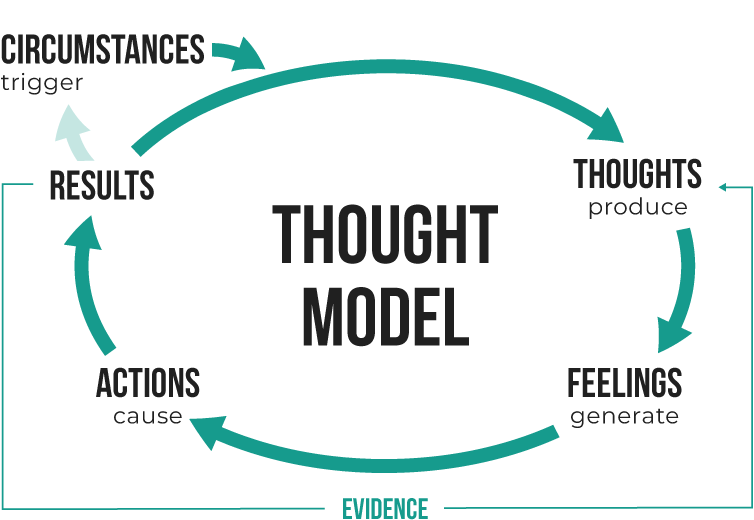tip 34 sources
1Rothman, E. F., Beckmeyer, J. J., Herbenick, D., Fu, T. C., Dodge, B., & Fortenberry, J. D. (2021). The Prevalence of Using Pornography for Information About How to Have Sex: Findings from a Nationally Representative Survey of U.S. Adolescents and Young Adults. Archives of sexual behavior, 50(2), 629–646. The Prevalence of Using Pornography for Information About How to Have Sex: Findings from a Nationally Representative Survey of U.S. Adolescents and Young Adults | SpringerLink
2Rothman, E. F., Kaczmarsky, C., Burke, N., Jansen, E., & Baughman, A. (2015). 'Without Porn … I Wouldn’t Know Half the Things I Know Now: A Qualitative Study of Pornography Use Among a Sample of Urban, Low-Income, Black and Hispanic Youth. Journal of sex research, 52(7), 736–746. https://doi.org/10.1080/00224499.2014.960908
3Willoughby, B. J., Young-Petersen, B., & Leonhardt, N. D. (2018). Exploring Trajectories of Pornography Use Through Adolescence and Emerging Adulthood. Journal of sex research, 55(3), 297–309. https://doi.org/10.1080/00224499.2017.1368977
4Love, T., Laier, C., Brand, M., Hatch, L., & Hajela, R. (2015). Neuroscience of Internet Pornography Addiction: A Review and Update. Behavioral sciences (Basel, Switzerland), 5(3), 388–433. Behavioral Sciences | Free Full-Text | Neuroscience of Internet Pornography Addiction: A Review and Update
5Stark R., Klucken T. (2017) Neuroscientific Approaches to (Online) Pornography Addiction. In: Montag C., Reuter M. (eds) Internet Addiction. Studies in Neuroscience, Psychology and Behavioral Economics. Springer, Cham. Neuroscientific Approaches to (Online) Pornography Addiction | SpringerLink
6De Sousa, A., & Lodha, P. (2017). Neurobiology of Pornography Addiction - A clinical review. Telangana Journal of Psychiatry, 3(2), 66-70. doi:10.18231/2455-8559.2017.0016
7Banca, P., Morris, L. S., Mitchell, S., Harrison, N. A., Potenza, M. N., & Voon, V. (2016). Novelty, conditioning and attentional bias to sexual rewards. Journal of psychiatric research, 72, 91–101. doi: 10.1016/j.jpsychires.2015.10.017
8Wéry, A., & Billieux, J. (2016). Online sexual activities: An exploratory study of problematic and non-problematic usage patterns in a sample of men. Computers in Human Behavior, 56, 257-266. doi:https://doi.org/10.1016/j.chb.2015.11.046
9Kristof, N. (2021). Why do we let corporations profit from rape videos? New York Times. Retrieved from https://www.nytimes.com/2021/04/16/opinion/sunday/companies-online-rape-videos.html
10Kristof, N. (2020). The children of Pornhub. New York Times. Retrieved from https://www.nytimes.com/2020/12/04/opinion/sunday/pornhub-rape-trafficking.html
11Kristof, N. (2021). Why do we let corporations profit from rape videos? New York Times. Retrieved from https://www.nytimes.com/2021/04/16/opinion/sunday/companies-online-rape-videos.html
12Burgess, M. (2020). Deepfake porn is now mainstream. and major sites are cashing in. Retrieved from Deepfake porn is now mainstream. And major sites are cashing in | WIRED UK
13Kristof, N. (2020). The children of Pornhub. New York Times. Retrieved from https://www.nytimes.com/2020/12/04/opinion/sunday/pornhub-rape-trafficking.html
14Meineck, S., & Alfering, Y. (2020). We went undercover in xHamster’s unpaid content moderation team. Retrieved from How Does xHamster Moderate its Content?
15Titheradge, N., & Croxford, R. (2021). The children selling explicit videos on OnlyFans. BBC News Retrieved from The children selling explicit videos on OnlyFans - BBC News
16Zhou, Y., Liu, T., Yan, Y., & Paul, B. (2021). Pornography use, two forms of dehumanization, and sexual aggression: Attitudes vs. behaviors. Null, 1-20. https://doi.org/10.1080/0092623X.2021.1923598
17Tylka, T. L. (2015). No harm in looking, right? Men’s pornography consumption, body image, and well-being. Psychology of Men & Masculinity, 16(1), 97–107. APA PsycNet
18 Tylka, T. L., & Kroon Van Diest, A. M. (2015). You Looking at Her “Hot” Body May Not be “Cool” for Me: Integrating Male Partners’ Pornography Use into Objectification Theory for Women. Psychology of Women Quarterly, 39(1), 67–84. https://doi.org/10.1177/0361684314521784
19Gottman, J., & Gottman, J. (April 5, 2016). An open letter on porn. Retrieved from An Open Letter on Porn
20Maddox, A. M., Rhoades, G. K., & Markman, H. J. (2011). Viewing Sexually-Explicit Materials Alone Or Together: Associations With Relationship Quality. Archives Of Sexual Behavior, 40(2), 441-448. Doi:10.1007/S10508-009-9585-4
21Bőthe, B., Tóth-Király, I., Griffiths, M. D., Potenza, M. N., Orosz, G., & Demetrovics, Z. (2021). Are sexual functioning problems associated with frequent pornography use and/or problematic pornography use? results from a large community survey including males and females. Addictive Behaviors, 112, 106603. doi:https://doi.org/10.1016/j.addbeh.2020.106603
22Sun, C., Bridges, A., Johnson, J. A., & Ezzell, M. B. (2016). Pornography and the male sexual script: An analysis of consumption and sexual relations. Archives of Sexual Behavior, 45(4), 983-994. doi:10.1007/s10508-014-0391-2
23 Szymanski, D. M., & Stewart-Richardson, D. N. (2014). Psychological, Relational, and Sexual Correlates of Pornography Use on Young Adult Heterosexual Men in Romantic Relationships. The Journal of Men’s Studies, 22(1), 64–82. https://doi.org/10.3149/jms.2201.64
24Cole, S., & Maiberg, E. (2020). Pornhub doesn’t care. Vice. Retrieved from The Endless Battle to Remove Girls Do Porn Videos From Pornhub
25BBC News. (2020). GirlsDoPorn: Young women win legal battle over video con. BBC News. Retrieved from GirlsDoPorn: Young women win legal battle over video con - BBC News
26Trafficking Victims Protection Act (TVPA) of 2000, Pub. L. No. 106–386, Section 102(a), 114 Stat. 1464. https://www.govinfo.gov/content/pkg/BILLS-106hr3244enr/pdf/BILLS-106hr3244enr.pdf
27Vera-Gray, F., McGlynn, C., Kureshi, I., & Butterby, K. (2021). Sexual violence as a sexual script in mainstream online pornography. The British Journal of Criminology, azab035. doi:10.1093/bjc/azab035
28Fritz, N., Malic, V., Paul, B., & Zhou, Y. (2020). A Descriptive Analysis of the Types, Targets, and Relative Frequency of Aggression in Mainstream Pornography. Archives of sexual behavior, 49(8), 3041–3053. A Descriptive Analysis of the Types, Targets, and Relative Frequency of Aggression in Mainstream Pornography | SpringerLink
29Bridges, A. J., Wosnitzer, R., Scharrer, E., Sun, C. & Liberman, R. (2010). Aggression and Sexual Behavior in Best Selling Pornography Videos: A Content Analysis Update. Violence Against Women, 16(10), 1065–1085. doi:10.1177/1077801210382866
30Bridges, A. J., Wosnitzer, R., Scharrer, E., Sun, C. & Liberman, R. (2010). Aggression and Sexual Behavior in Best Selling Pornography Videos: A Content Analysis Update. Violence Against Women, 16(10), 1065–1085. doi:10.1177/1077801210382866
31Mikorski, R., & Szymanski, D. M. (2017). Masculine norms, peer group, pornography, facebook, and men’s sexual objectification of women. Psychology of Men & Masculinity, 18(4), 257-267. doi:10.1037/men0000058
32Skorska, M.N., Hodson, G., & Hoffarth, M.R. (2018). Experimental effects of degrading versus erotic pornography exposure in men on reactions toward women (objectification, sexism, discrimination). The Canadian Journal of Human Sexuality, 27, 261 - 276.
33Zhou, Y., Liu, T., Yan, Y., & Paul, B. (2021). Pornography use, two forms of dehumanization, and sexual aggression: Attitudes vs. behaviors. Null, 1-20. https://doi.org/10.1080/0092623X.2021.1923598
34Foubert, J. D., Brosi, M. W., & Bannon, R. S. (2011). Pornography viewing among fraternity men: Effects on bystander intervention, rape myth acceptance and behavioral intent to commit sexual assault.18(4), 212-231. doi:10.1080/10720162.2011.625552
35Foubert, J. D., Brosi, M. W., & Bannon, R. S. (2011). Pornography viewing among fraternity men: Effects on bystander intervention, rape myth acceptance and behavioral intent to commit sexual assault. 18(4), 212-231. doi:10.1080/10720162.2011.625552
36 Foubert, J. D., & Bridges, A. J. (2017). What Is the Attraction? Pornography Use Motives in Relation to Bystander Intervention. Journal of Adolescent Research, 32(20), 213–243. https://doi.org/10.1177/0743558414547097
37Foubert, J. D., Brosi, M. W., & Bannon, R. S. (2011). Pornography viewing among fraternity men: Effects on bystander intervention, rape myth acceptance and behavioral intent to commit sexual assault.18(4), 212-231. doi:10.1080/10720162.2011.625552
38Foubert, J. D., & Bridges, A. J. (2017). What Is the Attraction? Pornography Use Motives in Relation to Bystander Intervention. Journal of Interpersonal Violence, 32(20), 3071–3089. https://doi.org/10.1177/0886260515596538
39Wright, P. J., & Tokunaga, R. S. (2016). Men’s Objectifying Media Consumption, Objectification of Women, and Attitudes Supportive of Violence Against Women. Archives of sexual behavior, 45(4), 955–964. https://doi.org/10.1007/s10508-015-0644-8
40Seabrook, R. C., Ward, L. M., & Giaccardi, S. (2019). Less than human? media use, objectification of women, and men’s acceptance of sexual aggression. Psychology of Violence, 9(5), 536-545. doi:10.1037/vio0000198
41van Oosten, J., & Vandenbosch, L. (2020). Predicting the Willingness to Engage in Non-Consensual Forwarding of Sexts: The Role of Pornography and Instrumental Notions of Sex. Archives of sexual behavior, 49(4), 1121–1132. https://doi.org/10.1007/s10508-019-01580-2
42Wright, P. J., Tokunaga, R. S., & Kraus, A. (2016). A meta-analysis of pornography consumption and actual acts of sexual aggression in general population studies. Journal of Communication, 66(1), 183-205. doi:Meta-Analysis of Pornography Consumption and Actual Acts of Sexual Aggression in General Population Studies | Journal of Communication | Oxford Academic
43Rostad, W. L., Gittins-Stone, D., Huntington, C., Rizzo, C. J., Pearlman, D., & Orchowski, L. (2019). The association between exposure to violent pornography and teen dating violence in grade 10 high school students. Archives of Sexual Behavior, 48(7), 2137-2147. doi:10.1007/s10508-019-1435-4
44Goodson, A., Franklin, C. A., & Bouffard, L. A. (2021). Male peer support and sexual assault: The relation between high-profile, high school sports participation and sexually predatory behaviour. 27(1), 64-80. doi:10.1080/13552600.2020.1733111
45Mikorski, R., & Szymanski, D. M. (2017). Masculine norms, peer group, pornography, Facebook, and men’s sexual objectification of women. Psychology of Men & Masculinity, 18(4), 257-267. doi:10.1037/men0000058
46Fritz, N., Malic, V., Paul, B., & Zhou, Y. (2021). Worse than objects: The depiction of black women and men and their sexual relationship in pornography. Gender Issues, 38(1), 100-120. doi:10.1007/s12147-020-09255-2
47xHamster. (2018). xHamster trend report 2018. Retrieved from xHamster Trend Report 2018
48Carroll, J. S., Busby, D. M., Willoughby, B. J., & Brown, C. C. (2017). The porn gap: Differences in men’s and women’s pornography patterns in couple relationships. Journal of Couple & Relationship Therapy, 16(2), 146–163. https://doi.org/10.1080/15332691.2016.1238796
49Carroll, J. S., Busby, D. M., Willoughby, B. J., & Brown, C. C. (2017). The porn gap: Differences in men’s and women’s pornography patterns in couple relationships. Journal of Couple & Relationship Therapy, 16(2), 146–163. https://doi.org/10.1080/15332691.2016.1238796
50Carroll, J. S., Busby, D. M., Willoughby, B. J., & Brown, C. C. (2017). The porn gap: Differences in men’s and women’s pornography patterns in couple relationships. Journal of Couple & Relationship Therapy, 16(2), 146–163. https://doi.org/10.1080/15332691.2016.1238796
51Malcolm, M., & Naufal, G. (2016). Are pornography and marriage substitutes for young men? Eastern Economic Journal, 42(3), 317-334. doi:10.1057/eej.2015.7
52Szymanski, D. M., Feltman, C. E., & Dunn, T. L. (2015). Male partners’ perceived pornography use and Women’s relational and psychological health: The roles of trust, attitudes, and investment. Sex Roles, 73(5), 187-199. doi:10.1007/s11199-015-0518-5
53Gilliland, R., South, M., Carpenter, B. N., & Hardy, S. A. (2011). The roles of shame and guilt in hypersexual behavior.18(1), 12-29. doi:10.1080/10720162.2011.551182
54Harper, C., & Hodgins, D. C. (2016). Examining Correlates of Problematic Internet Pornography Use Among University Students. Journal of behavioral addictions, 5(2), 179–191. https://doi.org/10.1556/2006.5.2016.022
55Wordecha, M., Wilk, M., Kowalewska, E., Skorko, M., Łapiński, A., & Gola, M. (2018). ‘Pornographic binges’ as a key characteristic of males seeking treatment for compulsive sexual behaviors: Qualitative and quantitative 10-week-long diary assessment. Journal of behavioral addictions, 7(2), 433–444. https://doi.org/10.1556/2006.7.2018.33
56Butler, M. H., Pereyra, S. A., Draper, T. W., Leonhardt, N. D., & Skinner, K. B. (2018). Pornography Use and Loneliness: A Bidirectional Recursive Model and Pilot Investigation. Journal of sex & marital therapy, 44(2), 127–137. https://doi.org/10.1080/0092623X.2017.1321601
57Willoughby, B. J., Young-Petersen, B., & Leonhardt, N. D. (2018). Exploring trajectories of pornography use through adolescence and emerging adulthood.55(3), 297-309. doi:10.1080/00224499.2017.1368977
58Koletić G. (2017). Longitudinal associations between the use of sexually explicit material and adolescents’ attitudes and behaviors: A narrative review of studies. Journal of adolescence, 57, 119–133. https://doi.org/10.1016/j.adolescence.2017.04.006
59Levin, M. E., Lillis, J., & Hayes, S. C. (2012). When is online pornography viewing problematic among college males? Examining the moderating role of experiential avoidance.19(3), 168-180. doi:10.1080/10720162.2012.657150
60
61Bőthe, B., Tóth-Király, I., Griffiths, M. D., Potenza, M. N., Orosz, G., & Demetrovics, Z. (2021). Are sexual functioning problems associated with frequent pornography use and/or problematic pornography use? results from a large community survey including males and females. Addictive Behaviors, 112, 106603. doi:https://doi.org/10.1016/j.addbeh.2020.106603
62 Szymanski, D. M., & Stewart-Richardson, D. N. (2014). Psychological, Relational, and Sexual Correlates of Pornography Use on Young Adult Heterosexual Men in Romantic Relationships. The Journal of Men’s Studies, 22(1), 64–82. https://doi.org/10.3149/jms.2201.64
63Dwulit, A. D., & Rzymski, P. (2019). Prevalence, Patterns and Self-Perceived Effects of Pornography Consumption in Polish University Students: A Cross-Sectional Study. International journal of environmental research and public health, 16(10), 1861. IJERPH | Free Full-Text | Prevalence, Patterns and Self-Perceived Effects of Pornography Consumption in Polish University Students: A Cross-Sectional Study
64Brown, C. C., Durtschi, J. A., Carroll, J. S., & Willoughby, B. J. (2017). Understanding and predicting classes of college students who use pornography. Computers in Human Behavior, 66, 114-121.
65Perry, S. (2017). Does Viewing Pornography Reduce Marital Quality Over Time? Evidence From Longitudinal Data. Archives Of Sexual Behavior, 46(2), 549-559. Doi: 10.1007/S10508-016-0770-Y
66Perry, S. L. (2018). Pornography use and marital separation: Evidence from two-wave panel data. Archives of Sexual Behavior, 47(6), 1869-1880. doi:10.1007/s10508-017-1080-8
67Perry, S. L., & Davis, J. T. (2017). Are pornography users more likely to experience a romantic breakup? Evidence from longitudinal data. Sexuality & Culture, 21(4), 1157-1176. doi:10.1007/s12119-017-9444-8
68Perry, S. L., & Schleifer, C. (2018). Till porn do us part? A longitudinal examination of pornography use and divorce. 55(3), 284-296. doi:10.1080/00224499.2017.1317709
69Jones, A. (2019). Sexcam therapy. The Face. Retrieved from Sexcam therapy - The Face
70Séguin, L. J., Rodrigue, C., & Lavigne, J. (2018). Consuming Ecstasy: Representations of Male and Female Orgasm in Mainstream Pornography. Journal of sex research, 55(3), 348–356. https://doi.org/10.1080/00224499.2017.1332152
71Mikorski, R., & Szymanski, D. M. (2017). Masculine norms, peer group, pornography, Facebook, and men’s sexual objectification of women. Psychology of Men & Masculinity, 18(4), 257-267. doi:10.1037/men0000058
72
73Séguin, L. J., Rodrigue, C., & Lavigne, J. (2018). Consuming Ecstasy: Representations of Male and Female Orgasm in Mainstream Pornography. Journal of sex research, 55(3), 348–356. https://doi.org/10.1080/00224499.2017.1332152
74Walker, A., Makin, D. A., & Morczek, A. L. (2016). Finding Lolita: A comparative analysis of interest in youth-oriented pornography. Sexuality & Culture, 20(3), 657-683. doi:10.1007/s12119-016-9355-0
75Lanning, K. V. (2010). Child molesters: A behavioral analysis for professionals investigating the sexual exploitation of children. (No. 5). National Center for Missing & Exploited Children. Retrieved from https://www.missingkids.org/content/dam/missingkids/pdfs/publications/nc70.pdf
76International Centre for Missing and Exploited Children. (2017). Online grooming of children for sexual purposes: Model legislation & global review. ( No. 1). Retrieved from https://www.icmec.org/wp-content/uploads/2017/09/Online-Grooming-of-Children_FINAL_9-18-17.pdf
77Bouché, V. (2018). Survivor insights: The role of technology in domestic minor sex trafficking. Thorn. Retrieved from https://www.thorn.org/wp-content/uploads/2019/12/Thorn_Survivor_Insights_090519.pdf
78Foubert, J. D., Brosi, M. W., & Bannon, R. S. (2011). Pornography viewing among fraternity men: Effects on bystander intervention, rape myth acceptance and behavioral intent to commit sexual assault.18(4), 212-231. doi:10.1080/10720162.2011.625552
79Foubert, J. D., & Bridges, A. J. (2017). What Is the Attraction? Pornography Use Motives in Relation to Bystander Intervention. Journal of Interpersonal Violence, 32(20), 3071–3089. https://doi.org/10.1177/0886260515596538
80Wright, P. J., & Tokunaga, R. S. (2016). Men’s Objectifying Media Consumption, Objectification of Women, and Attitudes Supportive of Violence Against Women. Archives of sexual behavior, 45(4), 955–964. https://doi.org/10.1007/s10508-015-0644-8
81Seabrook, R. C., Ward, L. M., & Giaccardi, S. (2019). Less than human? Media use, objectification of women, and men’s acceptance of sexual aggression. Psychology of Violence, 9(5), 536-545. doi:10.1037/vio0000198
82Gilliland, R., South, M., Carpenter, B. N., & Hardy, S. A. (2011). The roles of shame and guilt in hypersexual behavior. 18(1), 12-29. doi:10.1080/10720162.2011.551182
83 Beyens, I., Vandenbosch, L., & Eggermont, S. (2015). Early Adolescent Boys’ Exposure to Internet Pornography: Relationships to Pubertal Timing, Sensation Seeking, and Academic Performance. The Journal of Early Adolescence, 35(8), 1045–1068. https://doi.org/10.1177/0272431614548069
84Jones, A. (2019). Sexcam therapy. The Face. Retrieved from Sexcam therapy - The Face
85Fritz, N., Malic, V., Paul, B., & Zhou, Y. (2020). A Descriptive Analysis of the Types, Targets, and Relative Frequency of Aggression in Mainstream Pornography. Archives of sexual behavior, 49(8), 3041–3053. A Descriptive Analysis of the Types, Targets, and Relative Frequency of Aggression in Mainstream Pornography | SpringerLink
86Bridges, A. J., Wosnitzer, R., Scharrer, E., Sun, C. & Liberman, R. (2010). Aggression and Sexual Behavior in Best Selling Pornography Videos: A Content Analysis Update. Violence Against Women, 16(10), 1065–1085. doi:10.1177/1077801210382866
87Ezzell, M. B., Johnson, J. A., Bridges, A. J., & Sun, C. F. (2020). I (dis)like it like that: Gender, pornography, and liking sex. J.Sex Marital Ther., 46(5), 460-473. doi:10.1080/0092623X.2020.1758860
88International Andrology London. (2017). The porn hypothesis – findings prove porn consumption fuels the desire for penis enlargement surgery in the UK. Retrieved from https://london-andrology.co.uk/news/the-porn-hypothesis-findings-prove-porn-consumption-fuels-the-desire-for-penis-enlargement-surgery-in-the-uk/
89Butler, M. H., Pereyra, S. A., Draper, T. W., Leonhardt, N. D., & Skinner, K. B. (2018). Pornography Use and Loneliness: A Bidirectional Recursive Model and Pilot Investigation. Journal of sex & marital therapy, 44(2), 127–137. https://doi.org/10.1080/0092623X.2017.1321601
90Jokinen, J., Chatzittofis, A., Nordström, P., & Arver, S. (2016). The role of neuroinflammation in the pathophysiology of hypersexual disorder. Psychoneuroendocrinology, 71, 55. doi:https://doi.org/10.1016/j.psyneuen.2016.07.144
91Gervais, S. J., & Eagan, S. (2017). Sexual objectification: The common thread connecting myriad forms of sexual violence against women. The American journal of orthopsychiatry, 87(3), 226–232. https://doi.org/10.1037/ort0000257
92Mikorski, R., & Szymanski, D. M. (2017). Masculine norms, peer group, pornography, Facebook, and men’s sexual objectification of women. Psychology of Men & Masculinity, 18(4), 257-267. doi:10.1037/men0000058
93Skorska, M.N., Hodson, G., & Hoffarth, M.R. (2018). Experimental effects of degrading versus erotic pornography exposure in men on reactions toward women (objectification, sexism, discrimination). The Canadian Journal of Human Sexuality, 27, 261 - 276.
94Zhou, Y., Liu, T., Yan, Y., & Paul, B. (2021). Pornography use, two forms of dehumanization, and sexual aggression: Attitudes vs. behaviors. Null, 1-20. https://doi.org/10.1080/0092623X.2021.1923598
95Owens, E. W., Behun, R. J., Manning, J. C., & Reid, R. C. (2012). The impact of internet pornography on adolescents: A review of the research. 19(1-2), 99-122. doi:10.1080/10720162.2012.660431
96Koletić G. (2017). Longitudinal associations between the use of sexually explicit material and adolescents’ attitudes and behaviors: A narrative review of studies. Journal of adolescence, 57, 119–133. https://doi.org/10.1016/j.adolescence.2017.04.006
97Tylka, T. L., & Van Diest, A. M. K. (2015). You looking at her “hot” body may not be “cool” for me: Integrating male partners’ pornography use into objectification theory for women. Psychology of Women Quarterly,39, 67–84. http://dx.doi.org/10.1177/0361684314521784
98Tylka, T. L., & Kroon Van Diest, A. M. (2015). You Looking at Her “Hot” Body May Not be “Cool” for Me: Integrating Male Partners’ Pornography Use into Objectification Theory for Women. Psychology of Women Quarterly, 39(1), 67–84. https://doi.org/10.1177/0361684314521784
99Szymanski, D. M., Feltman, C. E., & Dunn, T. L. (2015). Male partners’ perceived pornography use and Women’s relational and psychological health: The roles of trust, attitudes, and investment. Sex Roles, 73(5), 187-199. doi:10.1007/s11199-015-0518-5
100Tylka, T. L., & Kroon Van Diest, A. M. (2015). You Looking at Her “Hot” Body May Not be “Cool” for Me: Integrating Male Partners’ Pornography Use into Objectification Theory for Women. Psychology of Women Quarterly, 39(1), 67–84. https://doi.org/10.1177/0361684314521784




















